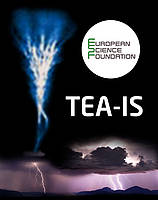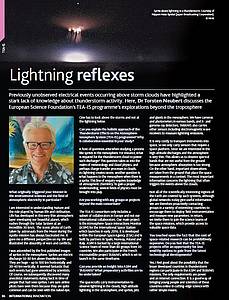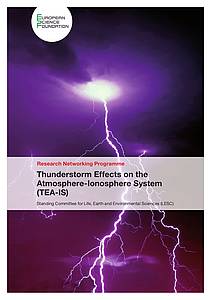NEWS
The call for submission of science meetings, short or exchange visit grants is now closed.
Summary
Two surprising phenomena have been observed above thunderstorms in the last twenty years; these are huge electric discharges in the stratosphere and mesosphere, and energetic bursts of gamma-radiation observed from satellites. Their late discovery demonstrates that our understanding of thunderstorms and of processes in the atmosphere above them is limited. They further underscore the point that thunderstorms affect not only the troposphere but all atmospheric layers and near-Earth space, and that several research fields must combine to advance our knowledge of the effects of thunderstorms on the atmosphere-ionosphere system.
Two European space missions are planned for studies of thunderstorms and atmospheric coupling. They are the Atmosphere-Space Interactions Monitor (ASIM) of the European Space Agency (ESA) and the French satellite “Tool for the Analysis of RAdiations from lightNIngs and Sprites” (TARANIS) developed by the French space agency Centre National d'Etudes Spatiales (CNES). To be launched in 2013 and 2014, the missions will study electric discharges above thunderstorms, thunderstorm-generated atmospheric gravity waves, and thunderstorm cloud properties.
Preparatory activities include deployment of new ground instrumentation for observing thunderstorms, planning of balloon-campaigns to study the atmosphere above thunderstorms, laboratory experiments, and development of theory and models. These activities will provide an essential context for the satellite measurements. This networking programme will help to coordinate the activities, and to structure and expand the European research community behind the missions towards the common goal of studying fundamental thunderstorm processes and their impacts. This task requires a multi-disciplinary approach of geosciences and physics, and of observations, experiments and theory. The applications are as diverse as the science, ranging from the industrial use of electric discharges to improved understanding of the role of thunderstorms in a changing climate. The programme will stimulate the exchange of methods and results between the European and international communities involved.

Duration
Five years, from May 2011 to April 2016.
External Web page
More information is available on the external web page.



